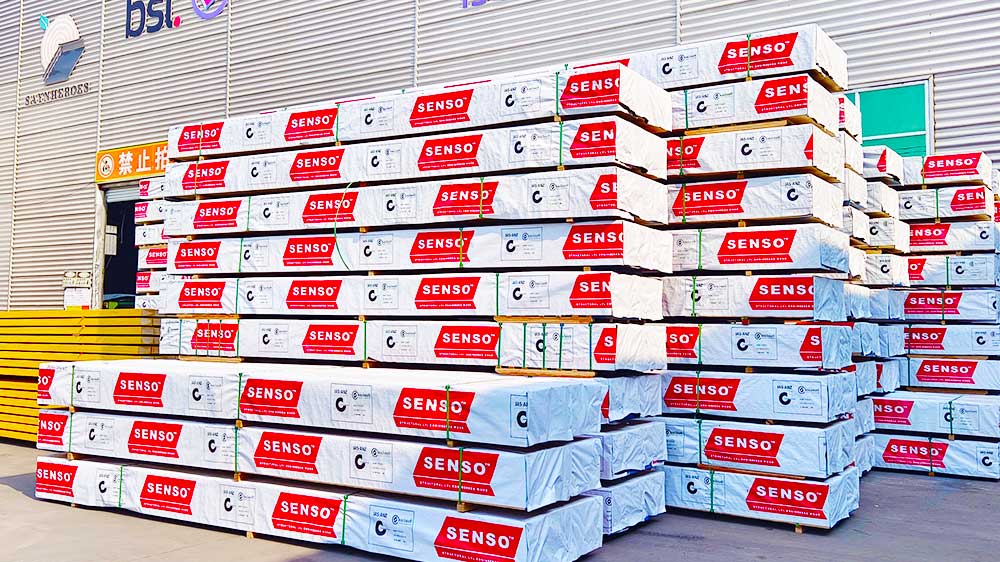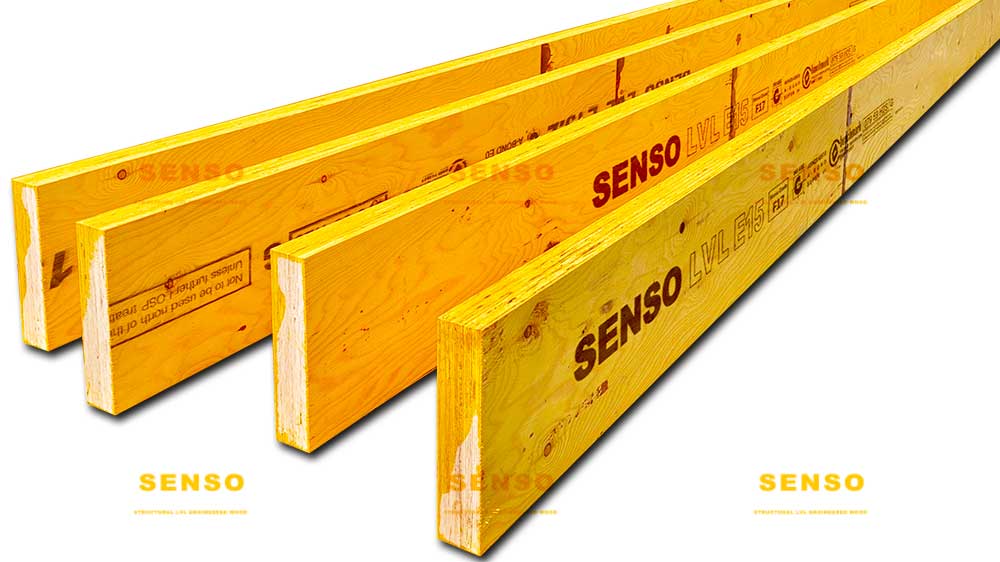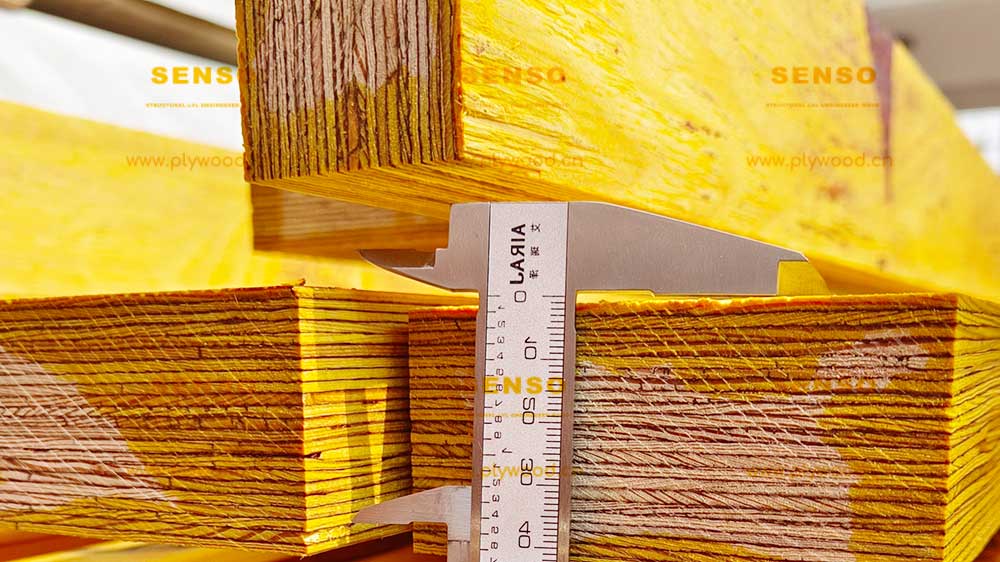What is a Wooden Beam?
A wooden beam, a fundamental component in construction, serves as a critical support structure in buildings. These beams, crafted from wood, are essential for bearing loads and transferring weight from the roof, floors, and ceilings to the building’s foundations. With a rich history in architecture, wooden beams have evolved from simple log supports to sophisticated engineered products like LVL (Laminated Veneer Lumber) beams. This evolution reflects ongoing advancements in technology and materials science, ensuring wooden beams remain indispensable in modern construction.
The Evolution of Wooden Beams in Construction
The Journey from Solid Wood to Engineered Solutions
The transformation from traditional solid wood beams to engineered wood products marks a significant milestone in construction history. This shift was driven by the need for more sustainable, durable, and versatile building materials. Engineered wood beams, such as LVL beams, offer enhanced strength, stability, and resistance to environmental factors, making them ideal for a wide range of applications.
Sustainable Forestry Practices and Wooden Beams
Sustainability is at the heart of modern wooden beam production. With a growing emphasis on environmental stewardship, the industry has adopted sustainable forestry practices. These practices ensure a balance between wood production and the conservation of forests, contributing to the long-term availability of wood as a renewable resource.
The Aesthetic and Functional Appeal of Wooden Beams
Bringing Warmth and Character to Spaces
Wooden beams are not just structural elements; they also add warmth, character, and a sense of natural beauty to spaces. Whether exposed in rustic settings or integrated into contemporary designs, wooden beams can dramatically enhance the aesthetic appeal of interiors.
Versatility in Design and Application
The versatility of wooden beams extends beyond their visual appeal. Available in various sizes, shapes, and types, they can be customized to meet specific design requirements. This adaptability makes wooden beams suitable for a wide range of architectural styles, from traditional homes to modern commercial buildings.
Innovations in Wooden Beam Technology
The Rise of Laminated Veneer Lumber (LVL) Beams
LVL beams represent a breakthrough in wooden beam technology. Manufactured by bonding together thin layers of wood veneers under heat and pressure, LVL beams provide superior strength and stiffness compared to traditional solid wood beams. This makes them an excellent choice for applications requiring long spans and heavy loads.
Enhancing Durability and Resistance
Innovations in treatment and manufacturing processes have significantly enhanced the durability and resistance of wooden beams to environmental threats such as moisture, pests, and decay. These advancements ensure a longer lifespan for wooden structures, reducing the need for maintenance and replacement.
The Role of Wooden Beams in Modern Architecture
Harmonizing Functionality with Eco-Friendliness
In the realm of modern architecture, wooden beams stand out for their ability to marry functionality with environmental sustainability. As architects and builders increasingly prioritize green building practices, the appeal of wooden beams, particularly those sourced from responsibly managed forests, has surged. This trend underscores a collective move towards constructions that not only serve human needs but also minimize environmental impact.
The Architectural Flexibility of Wooden Beams
Wooden beams provide unmatched design flexibility. They fit into many architectural styles, from modern to traditional. Their natural look enhances various designs. The adaptability of wooden beams stands out. They can be customized for specific designs. This opens up endless creative possibilities. Innovative building designs become feasible with wooden beams.
Enhancing Structural Integrity with Wooden Beams
The Strength-to-Weight Advantage
Engineered wooden beams like LVL boast a high strength-to-weight ratio. This trait makes them efficient in construction. Structures become strong yet lightweight. This is crucial in earthquake-prone areas. Lighter building materials improve seismic performance. The advantage supports safer, more resilient buildings.
Technological Advancements in Beam Construction
Technological advancements have revolutionized the production and application of wooden beams. Modern manufacturing techniques have led to the development of beams that are not only stronger and more durable but also more consistent in quality. Additionally, the integration of technology in the design and construction process allows for precise customization of beams to meet specific architectural requirements, further enhancing their structural integrity and performance.
The Economic and Environmental Impact of Wooden Beams
Cost-Effectiveness of Wooden Beam Construction
The use of wooden beams in construction offers significant economic benefits. Compared to steel or concrete, wood is generally more cost-effective, both in terms of raw material costs and the labor involved in its installation. This cost advantage makes wooden beams an attractive option for a wide range of construction projects, from residential homes to commercial buildings.
The Environmental Benefits of Using Wood
The environmental benefits of using wooden LVL beam in construction are manifold. Wood is a renewable resource, and when sourced from sustainably managed forests, its use contributes to the reduction of carbon emissions. Furthermore, wood has a natural ability to sequester carbon dioxide, making wooden buildings a carbon storage solution that can help mitigate climate change.
The Future of Wooden Beams in Construction
Pioneering Sustainable Building Solutions
The future of wooden beams in construction looks promising, with a continued focus on sustainability and innovation. As the construction industry evolves, the demand for materials that are not only environmentally friendly but also technologically advanced is on the rise. Wooden beams, especially engineered types like LVL, are at the forefront of this shift. They represent a perfect blend of nature’s bounty and human ingenuity, offering solutions that are sustainable, durable, and adaptable to various architectural demands.
Advancements in Engineered Wood Products
The development of engineered wood products is set to redefine the capabilities of wooden beams. With research and innovation, these products are becoming even more efficient and versatile. Advances in adhesive technologies, for instance, are improving the structural integrity and environmental resilience of engineered beams. Moreover, the incorporation of smart technologies, such as sensors embedded within beams to monitor health and performance, is expected to enhance the safety and longevity of wooden structures.
The Impact of Digital Fabrication and Design
Digital fabrication and design technologies, such as computer-aided design (CAD) and computer-aided manufacturing (CAM), are transforming the way wooden beams are conceptualized, produced, and utilized. These technologies allow for precise customization of beams, optimizing their shape and size for specific structural requirements. This not only maximizes the efficiency of the beams but also reduces waste during the manufacturing process, contributing further to the sustainability of wooden construction.
Expanding Applications Beyond Traditional Boundaries
As the properties of wooden beams are enhanced through technological advancements, their applications are expanding beyond traditional boundaries. Wooden beams are increasingly being used in high-rise buildings, bridges, and other structures where steel and concrete once dominated. This expansion is testament to the potential of ceiling beams to meet the complex demands of contemporary construction, paving the way for a new era of sustainable and innovative architectural designs.
A Vision for a Sustainable Future
Innovation in wooden beams shows a shift towards sustainability. Facing climate change, the construction industry opts for eco-friendly materials like wood. Wood offers environmental and structural benefits. This choice aligns with sustainable building practices. Wooden beams merge traditional appeal with modern performance. They show how construction can coexist with nature. This approach helps build a future in harmony with the environment.
Related Keywords: digital fabrication, sustainable building solutions, technological advancements, innovative construction

Wrapping Up: The Lasting Legacy of Wooden Beams
Wooden beams have evolved from basic elements to sustainable solutions. This reflects tradition meeting innovation. The construction industry’s evolution highlights wooden beams’ growing significance. Advancements in engineered wood, like LVL, play a big role. Wooden beams offer aesthetics, structural integrity, sustainability, and efficiency. They meet modern construction demands and promote environmental harmony. Their legacy proves their timeless relevance in our built environment. This is a testament to nature’s strength and versatility.
FAQs About Wooden Beams
What are the three types of beams?
The three primary types of beams used in construction are solid lumber beams, engineered wood beams (such as LVL and glulam), and steel or composite beams.
What’s the strongest wood beam?
Engineered wood beams, like Laminated Veneer Lumber (LVL) and Glued Laminated Timber (glulam), are among the strongest wood beams due to their manufacturing process, which enhances their strength and load-bearing capabilities.
Which wood is best for beams?
Choosing the best wood for beams hinges on project needs. Considerations include strength, looks, and eco-friendliness. Engineered woods like LVL and glulam offer strength and versatility. Traditional woods like Douglas fir and Southern yellow pine are prized for beauty and durability. Each type meets different construction requirements.
Are wood beams expensive?
The cost of wood beams varies widely depending on the type of wood, size, and whether the beam is solid lumber or an engineered product. Generally, engineered wood beams can be more expensive upfront than solid lumber beams, but their superior strength and efficiency may offer cost savings in the long run.
Why are beams so popular?
Beams are popular in construction due to their essential role in providing structural support, their aesthetic appeal, and the warmth and natural beauty they bring to spaces. Additionally, advancements in wooden beam technology have made them more sustainable, versatile, and efficient, further increasing their popularity in modern construction.
Post time: Feb-18-2024



